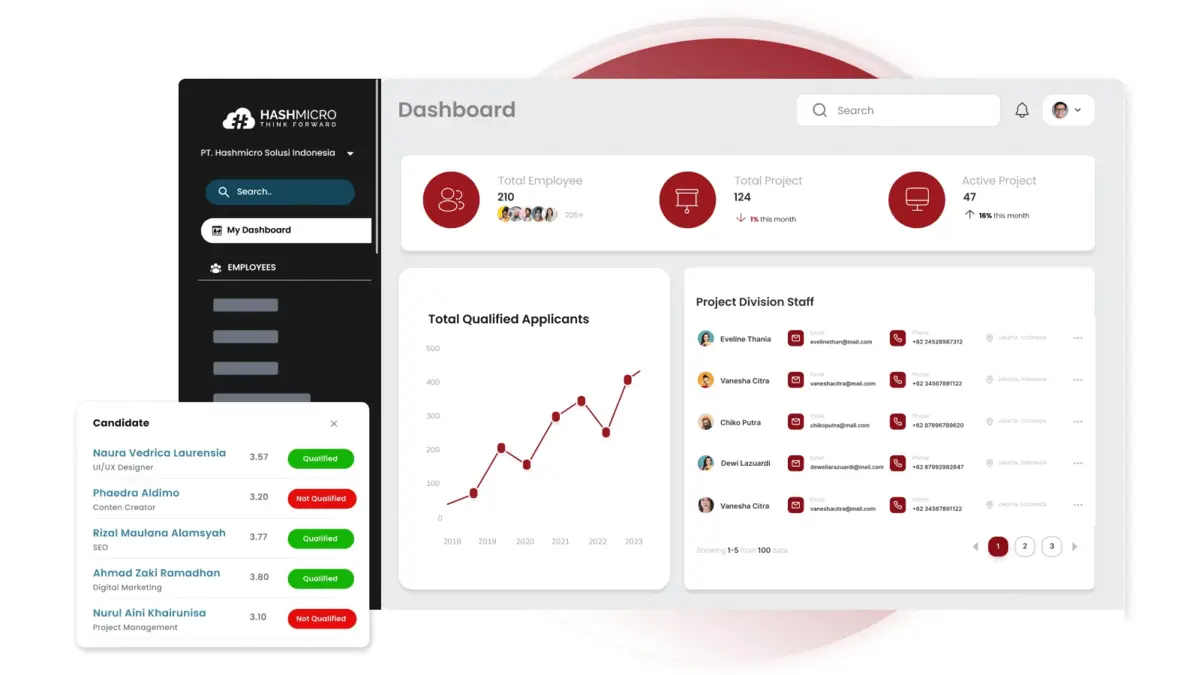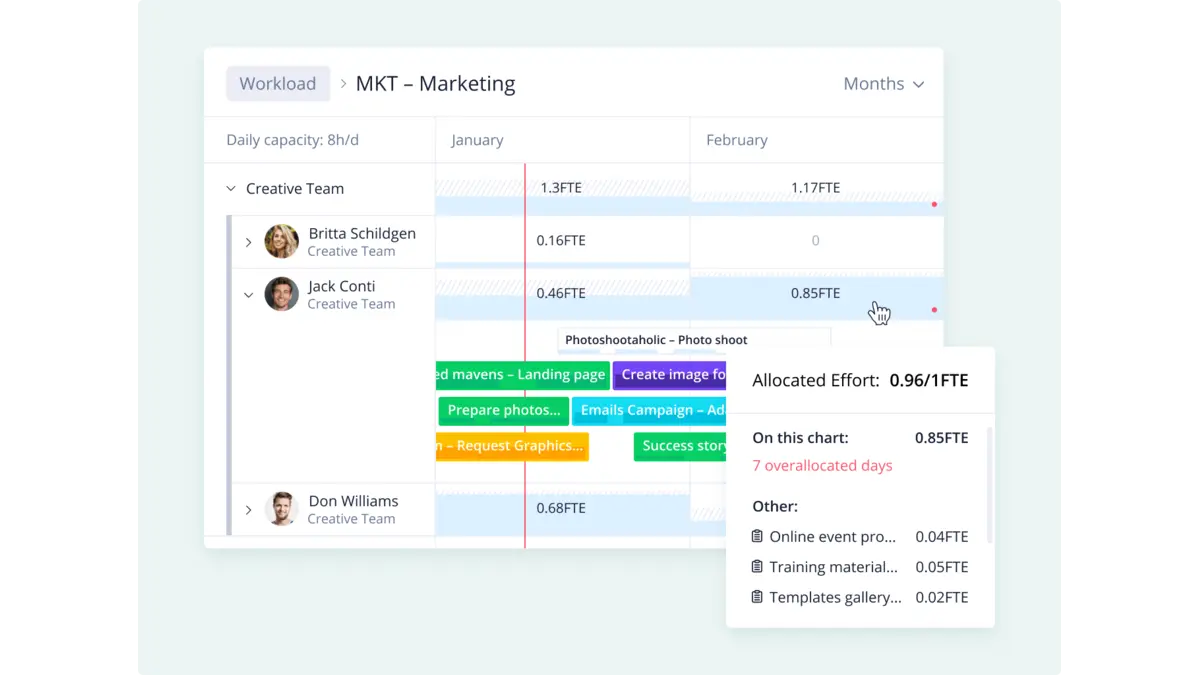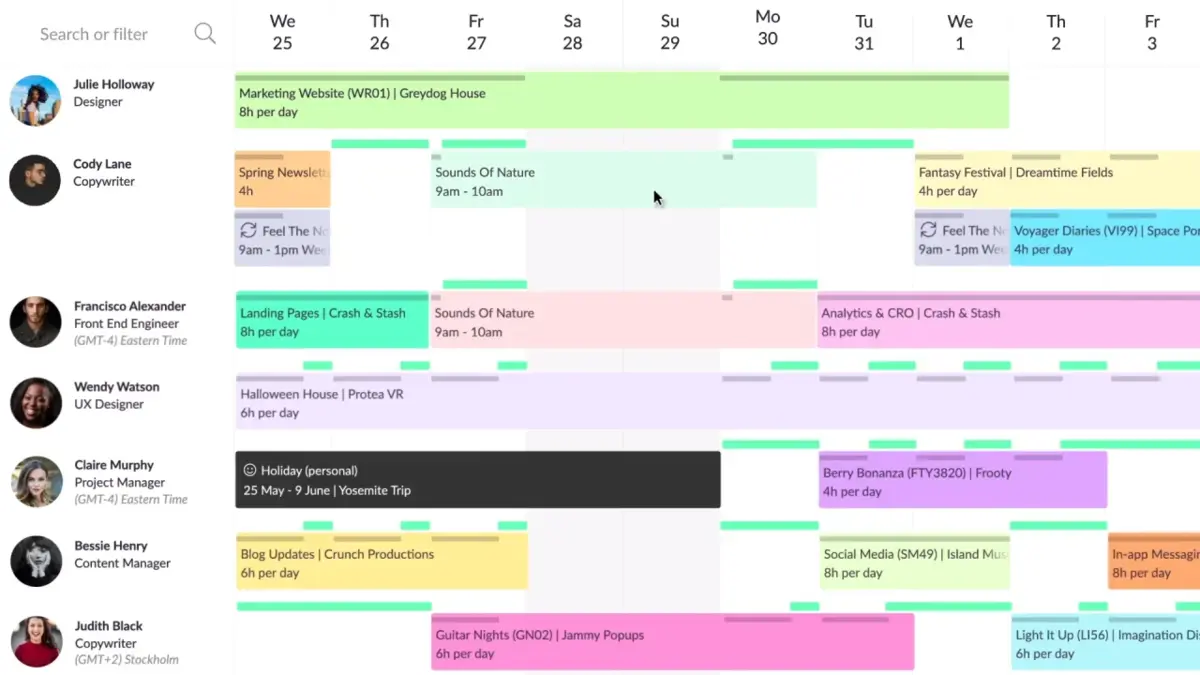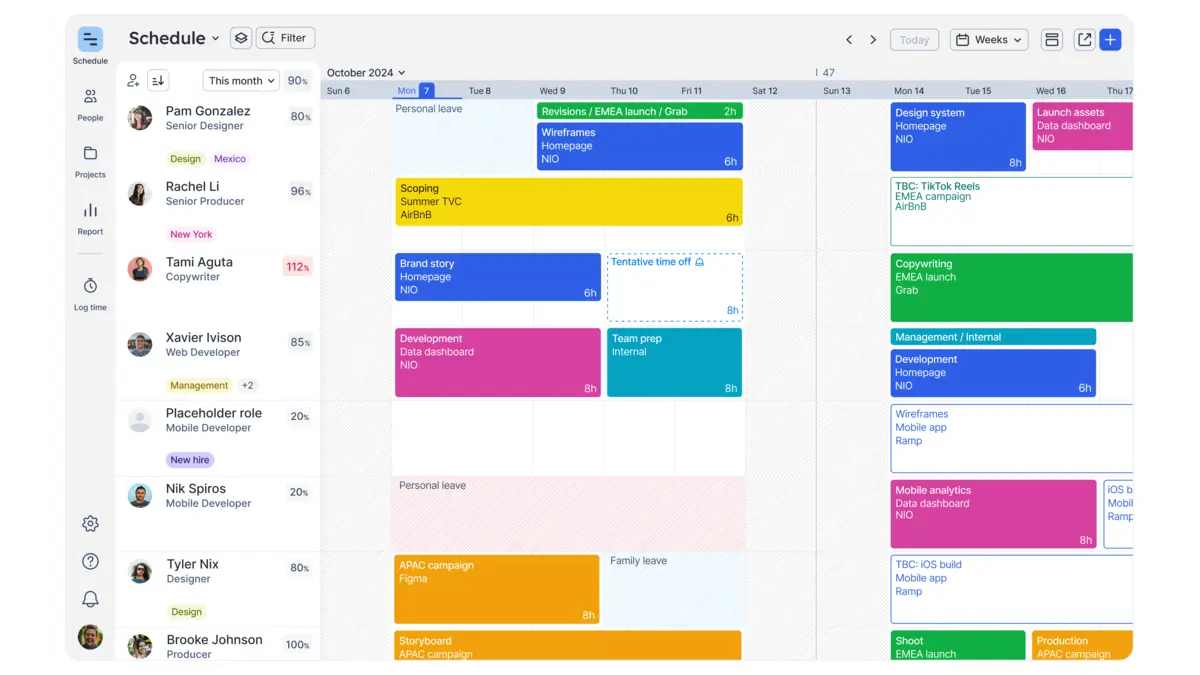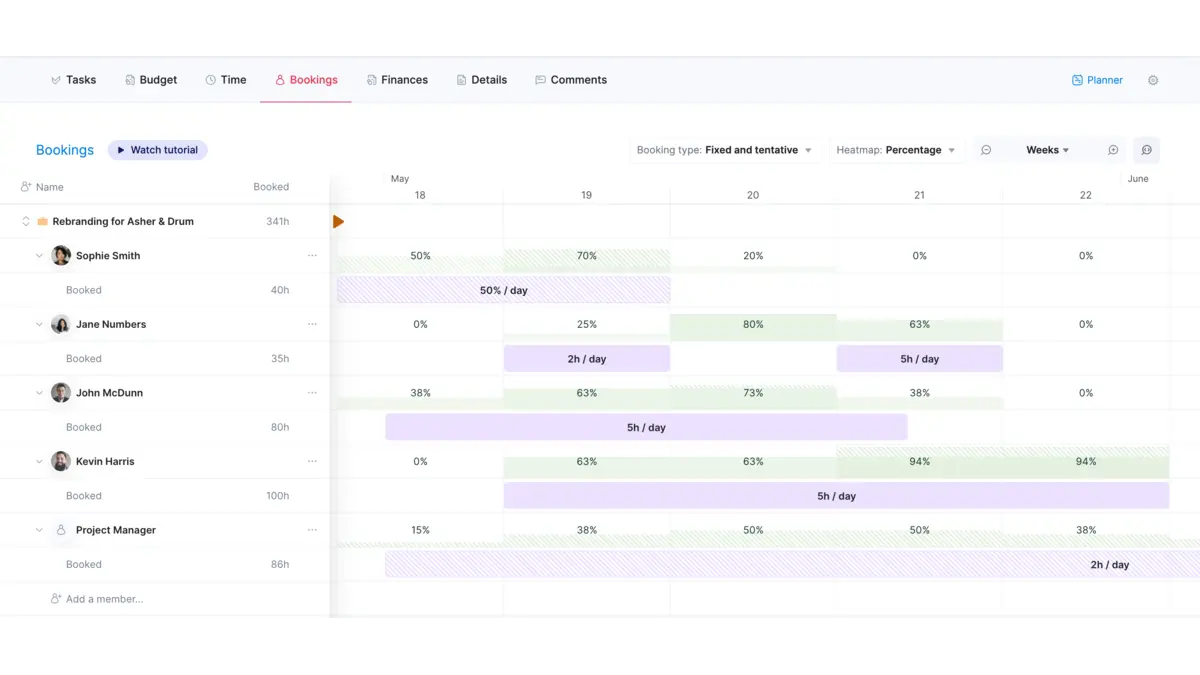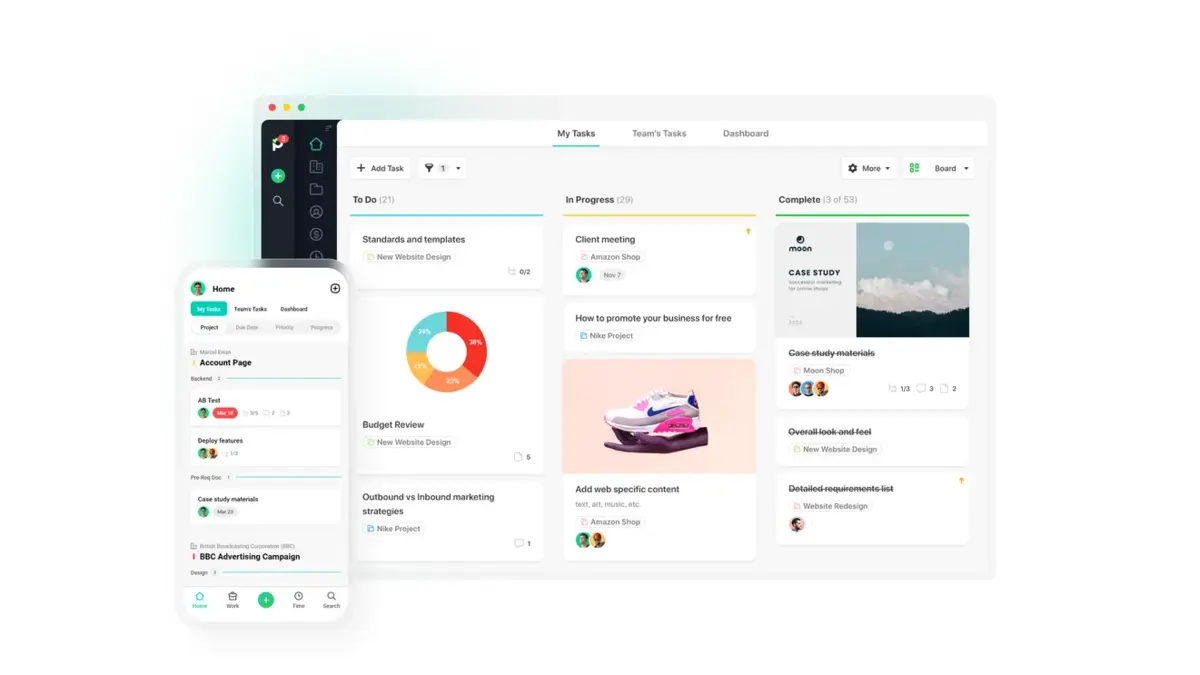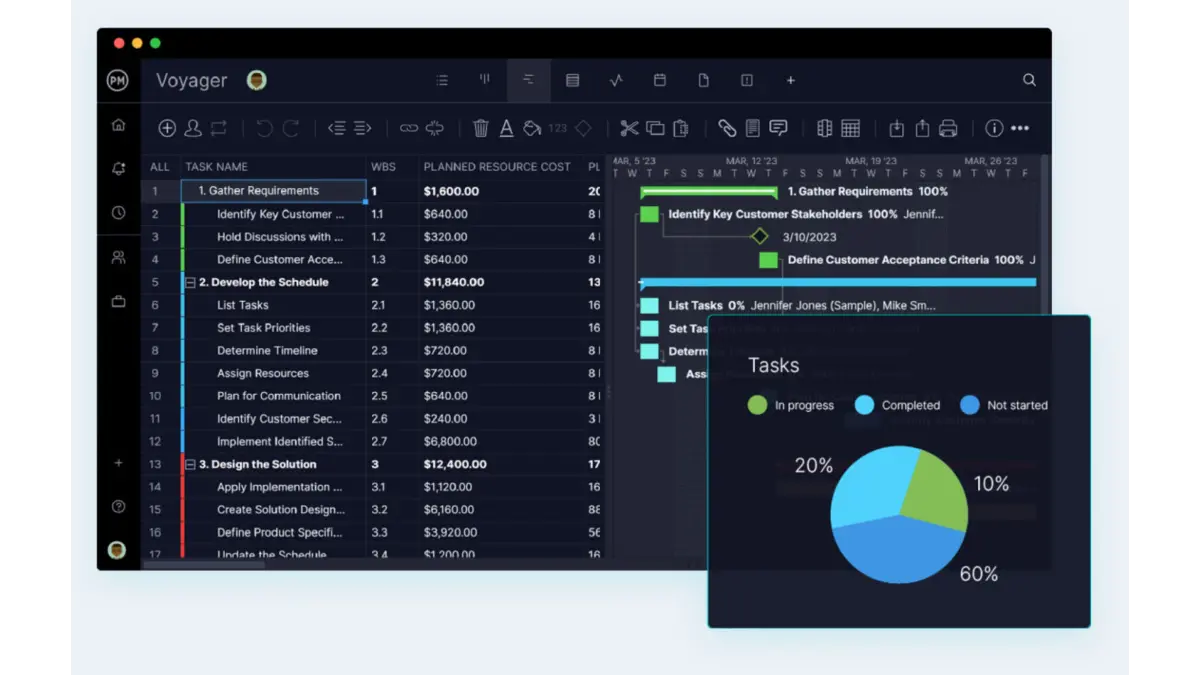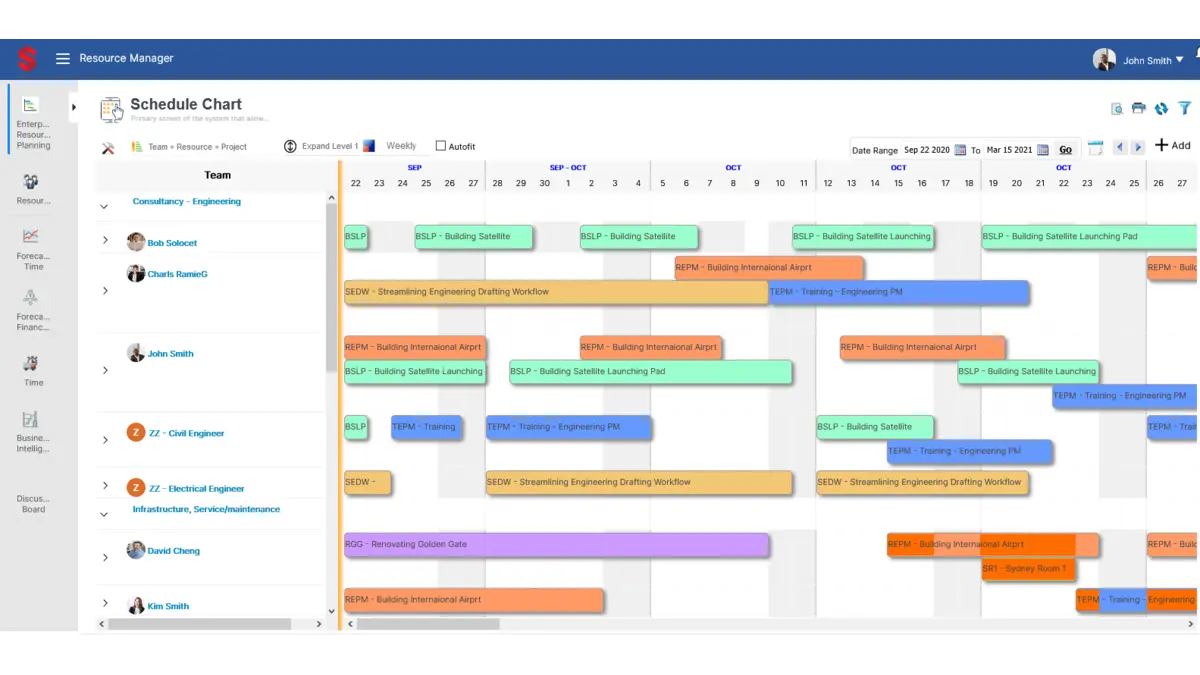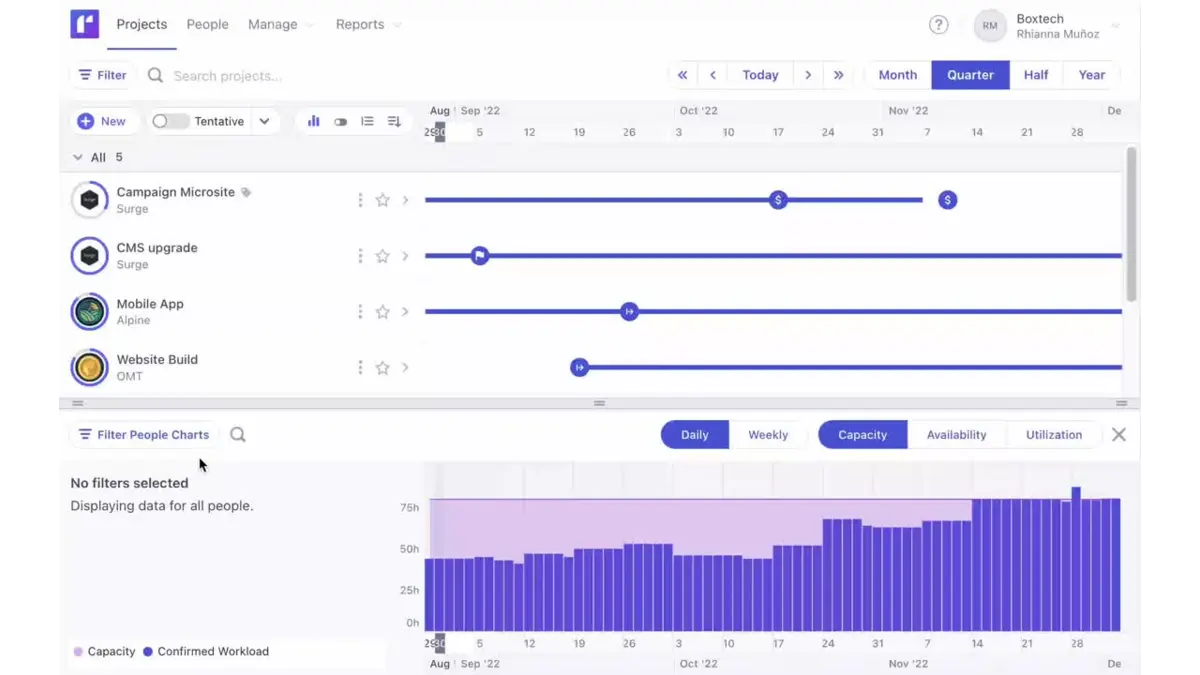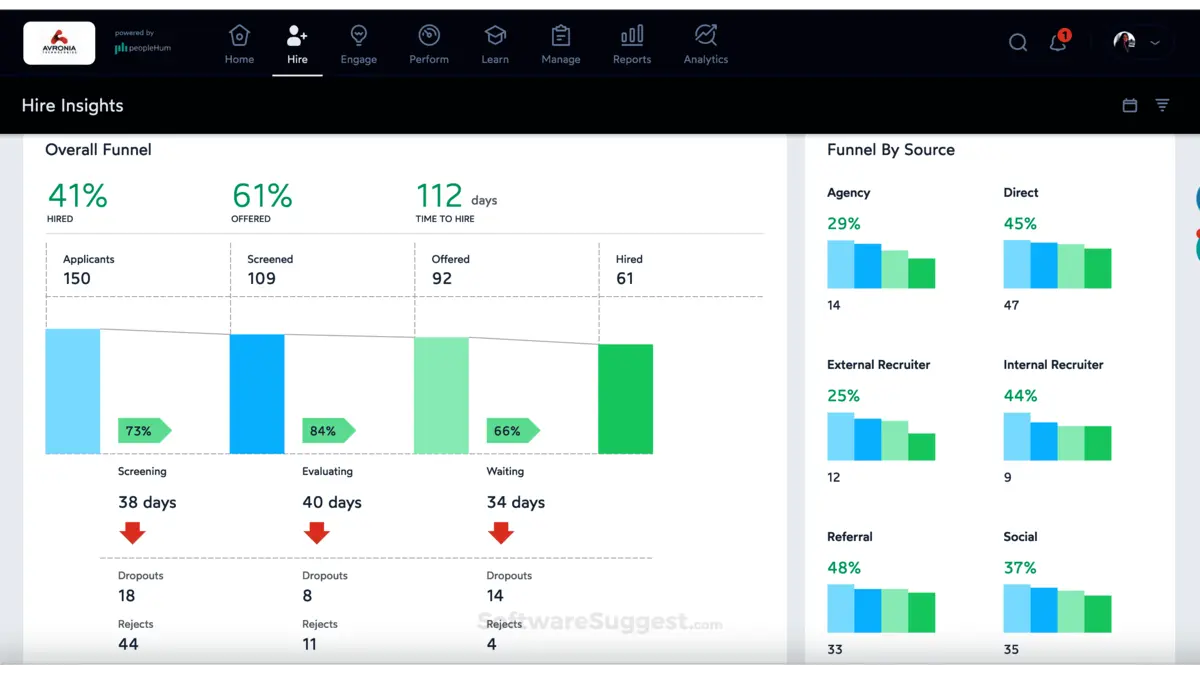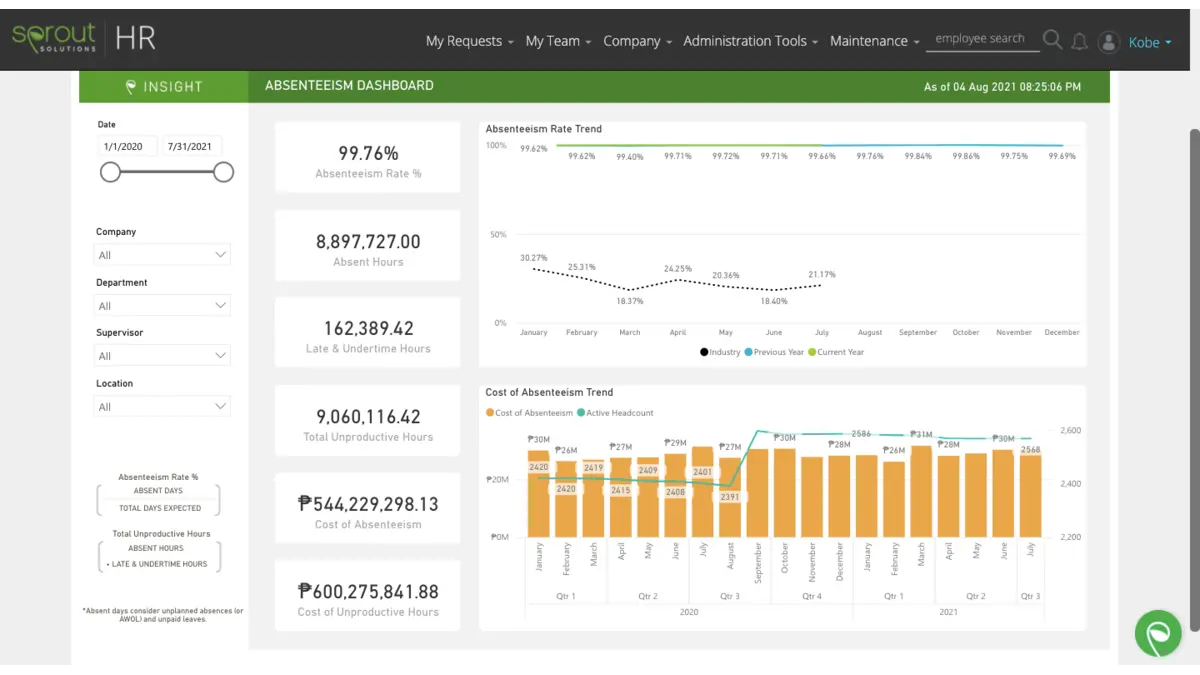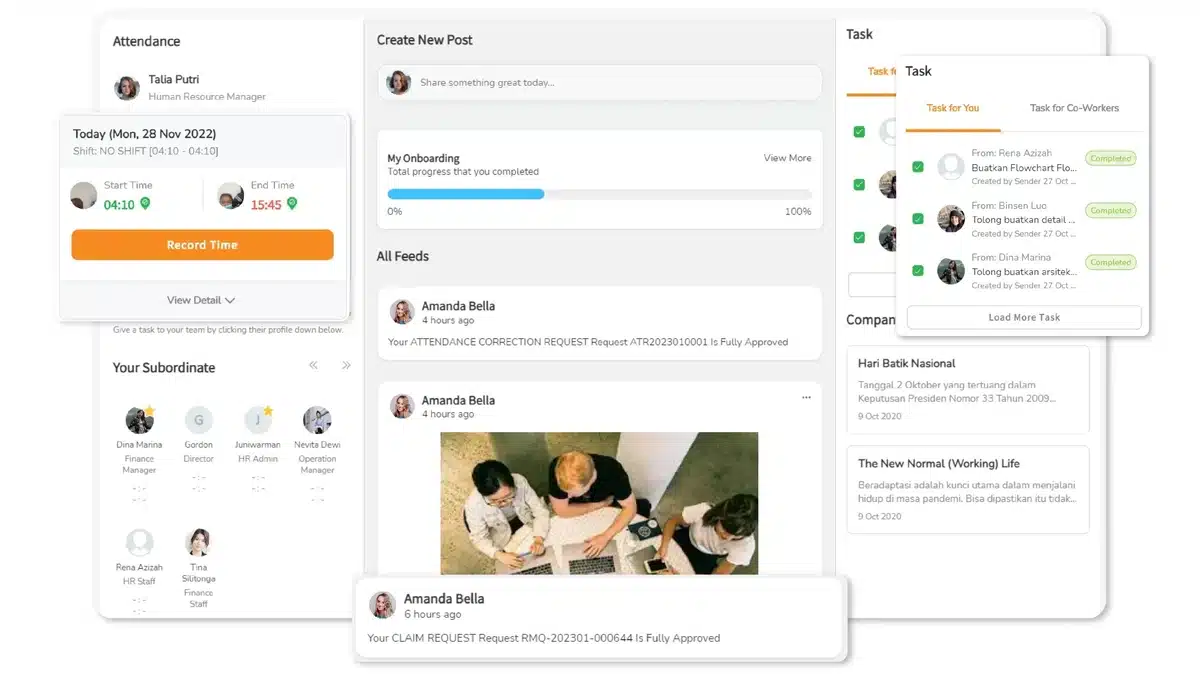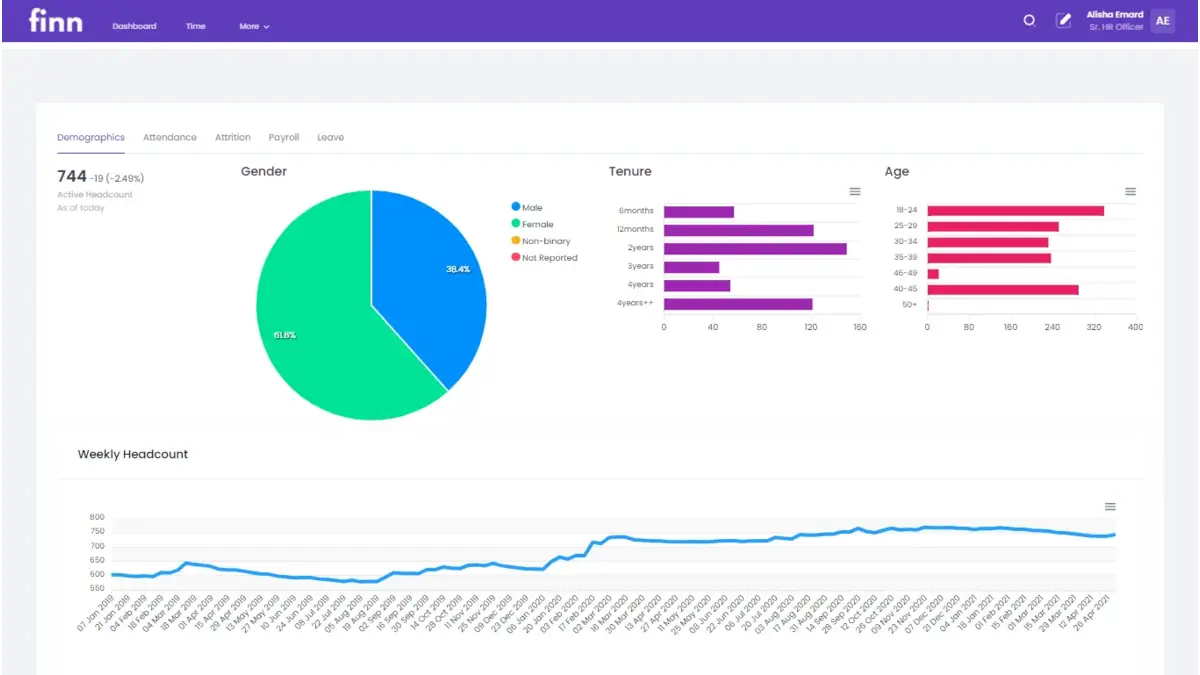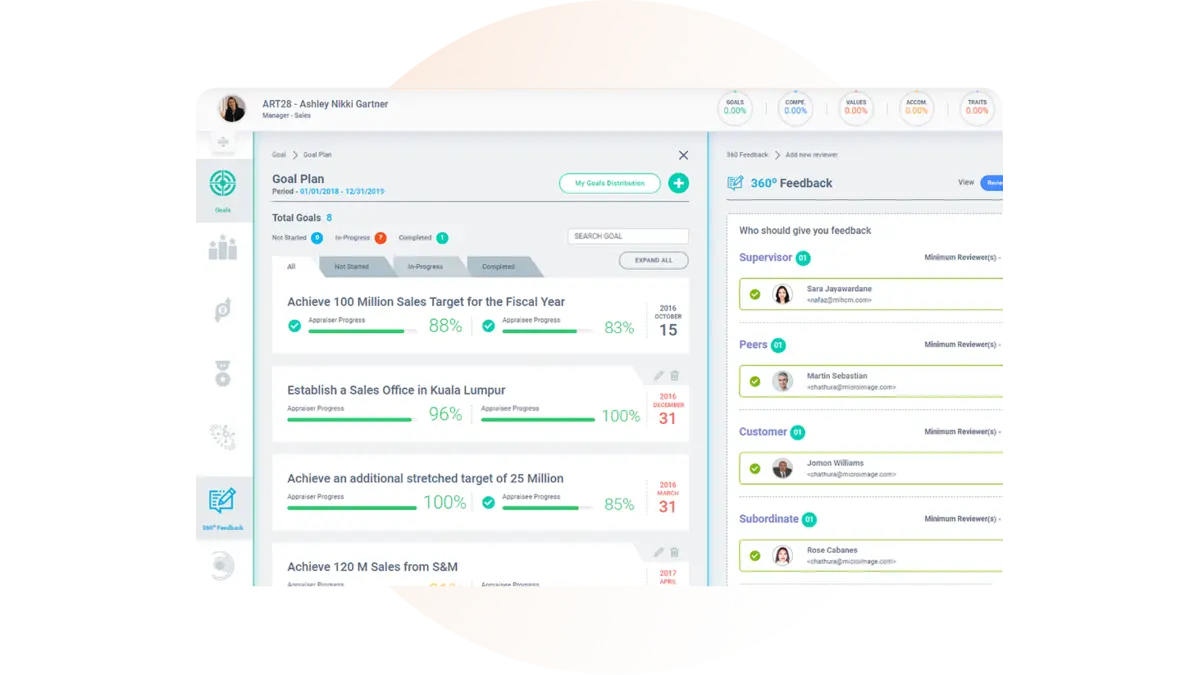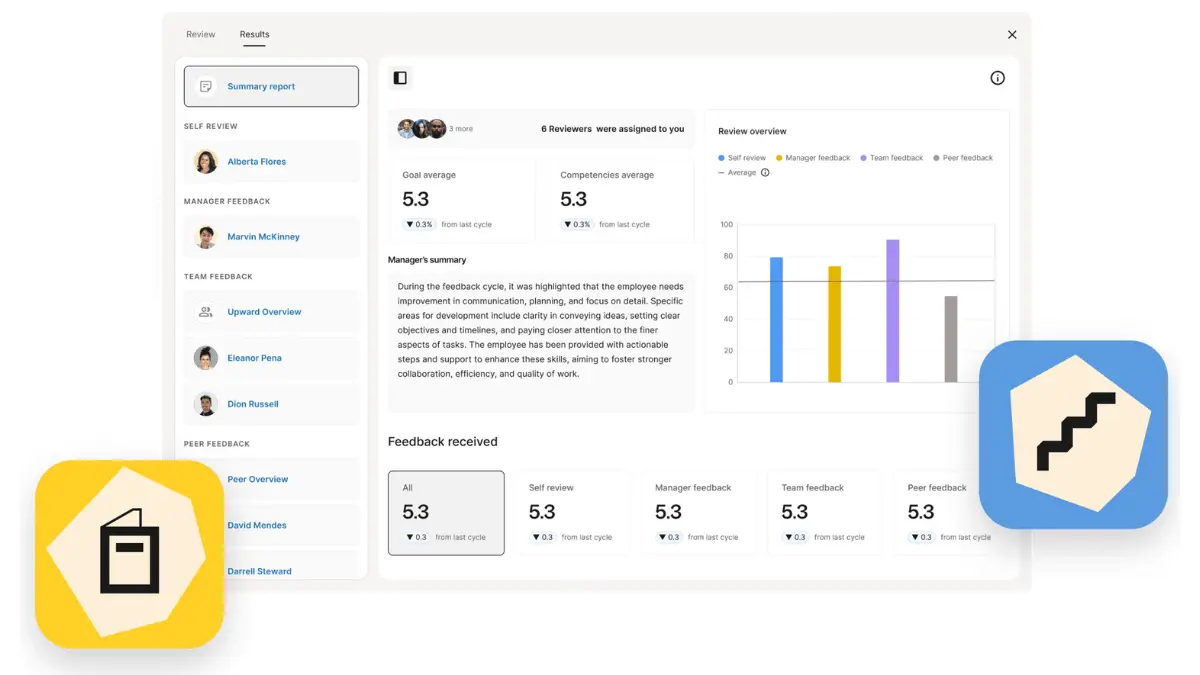This article will explore the 16 best resource management software options in the Philippines for 2025. This guide aims to help businesses find software that best fits their needs, budget, and capabilities.
Choosing the right resource management software can significantly impact your business’s efficiency and success. According to a report by G2, 78% of companies that implemented resource management software saw an improvement in task management and overall productivity.
Additionally, 65% of these companies reported significantly reducing project delays and errors. With the growing importance of efficient resource allocation and project management, choosing the right software is crucial.
Given the many options available, we understand that finding the right resource management tool can be challenging. This article will provide an overview of the top resource management software, highlighting its features, strengths, and weaknesses to help you make an informed decision.
Whether you are a small business or a large enterprise, our comprehensive list will help you select the most suitable resource management software for your business needs in 2025.
Table of Contents

Key Takeaways
|
What is Resource Management Software?
Resource management software is a technology designed to help businesses efficiently allocate and manage their resources, such as employees, time, and budgets. It provides task scheduling, time tracking, and performance analysis to streamline operations and improve decision-making.
According to a survey by IEEE , businesses using resource management software saw a 30% improvement in project delivery times and a 20% reduction in costs. This software also helps in resource planning and scheduling, making it easier to allocate resources where they are needed most.
Key resource management considerations
When managing resources, there are several key considerations to keep in mind to ensure efficiency and productivity.
- Employee utilization: It’s essential to track how much time employees spend on tasks. A study shows that companies can improve productivity by 20% with better resource allocation.
- Project scheduling: Proper scheduling helps avoid conflicts and ensures projects stay on track. About 45% of projects fail due to poor scheduling and time management.
- Budget management: It is crucial to keep projects within budget. Companies with strong budget management practices report a 30% increase in project success.
- Compliance and regulations: Ensuring your business complies with local laws can prevent costly penalties. Around 50% of companies face compliance issues annually, impacting their operations.
These factors will help you manage resources more effectively and avoid common pitfalls.
Benefits of using resource management software
Using resource management software can greatly benefit your business. Here’s how:
- Improved efficiency: It helps streamline tasks and schedules, reducing manual errors. Studies show that businesses using such software can see a 20% increase in productivity.
- Cost savings: By optimizing resource use, companies can cut costs by up to 15%.
Better project management: It keeps projects on track, leading to a 25% improvement in on-time delivery rates. - Enhanced collaboration: Teams can work together more efficiently, sharing real-time information and updates. This can improve team communication by 30%.
- Accurate reporting: The software provides detailed reports on resource use and project progress, helping in better decision-making. Accurate data can boost decision-making efficiency by 40%.
These benefits make resource management software a valuable tool for any business.
Essential features in resource management software for business
Choosing the right resource management software for your business is important. Here are some critical features to look for:
- Task management: Helps you assign and track tasks, ensuring everyone knows their responsibilities and deadlines.
- Scheduling: Allows you to create and manage employee schedules, making sure shifts are covered and avoiding conflicts.
- Time tracking: Records the hours employees work, helping with payroll and ensuring accurate client billing.
- Payroll integration: This human resource management system simplifies the payroll process by automatically calculating wages based on hours worked and integrating with the best payroll software within the system.
- Compliance management: Ensures your business adheres to local labor laws and regulations, reducing the risk of legal issues.
- Reporting and analytics: Provide insights into employee performance, project progress, and resource utilization, helping you make informed decisions.
- Communication tools: Facilitates easy communication between team members, improving collaboration and efficiency.
These features will help you manage your resources effectively, streamline operations, and boost productivity.
16 Best Resource Management Software for Businesses in The Philippines
Now that we understand what resource management software is and how it works let’s explore the available options.
This section will delve into the best 16 resource management software for businesses in the Philippines, highlighting key features and benefits to help you choose the right one.
1. HashMicro’s resource management software
HashMicro’s Resource Management Software is a robust solution for businesses in the Philippines that provides efficient resource management. This software ensures streamlined operations by providing features like task management, payroll integration, and compliance with local regulations.
This vendor offers interested clients free demo access to explore their resource management software with no upfront commitment. This allows you to see the software’s features and benefits firsthand, ensuring it meets your business needs before making any decisions.
HashMicro’s human resource management software can significantly enhance your resource management process. Streamlining task assignments, scheduling, and time tracking, ensures that your resources are used efficiently and leads to better productivity.
With its user-friendly interface and customizable features, including the ability to add users at any time, HashMicro’s resource management software stands out as the best resource-tracking solution for your business.
Key features:
- Advanced attendance tracking: This feature uses facial recognition and GPS to accurately track employee attendance and location, preventing fraud and ensuring precise records.
- Flexible scheduling management: Dynamically manage employee schedules, creating flexible rosters that accommodate various shifts and work patterns, ensuring optimal staffing levels.
- Comprehensive payroll solutions: Automatically generate accurate payslips for daily and hourly workers, ensuring timely payments and reducing manual payroll errors.
- Efficient approval processes: Streamline approval processes by delegating tasks and setting up automatic follow-up notifications to ensure prompt and efficient approvals without delays.
- Performance and talent tracking: Track employee performance against KPIs to identify top talent and areas for improvement and align goals with organizational objectives.
- Employee development and training: Create and manage employee development plans using e-learning systems to deliver training and track progress, ensuring continuous growth and skill enhancement.
- In-depth performance analysis: Use the Nine Box Matrix to analyze performance and categorize employees by performance and potential, aiding succession planning and talent decisions.
|
Pros |
Cons |
|
|
HashMicro offers a transparent pricing scheme that prospective clients can access and download directly from their website. This allows businesses to understand the budget required for their resource management software without any commitment.
By providing this information upfront, HashMicro helps companies make informed decisions and plan their finances effectively before making a purchase.
2. Resource management software Wrike
Wrike is a versatile project and resource management software designed to streamline collaboration and improve productivity for teams of all sizes. It offers a robust set of tools to manage tasks, projects, and resources efficiently.
With Wrike, users can customize workflows, track time, and utilize advanced analytics to optimize resource allocation and project outcomes.
Key features:
- Customizable dashboards: Personalized dashboards that offer a clear view of project progress and team performance.
- Resource management: Tools for planning, allocating, and managing resources effectively, ensuring optimal utilization.
- Time tracking: Integrated time tracking to monitor project timelines and employee work hours accurately.
- Real-time collaboration: Real-time collaboration features include document sharing, comments, and live editing.
- Gantt charts: Interactive Gantt charts for visualizing project timelines and dependencies.
- Advanced reporting: Detailed reporting and analytics to gain insights into project performance and resource usage.
|
Pros |
Cons |
|
|
3. Resource Guru management software
Resource Guru is a comprehensive resource management software designed to help businesses effectively allocate and manage their resources. It provides a user-friendly interface for scheduling and tracking project resources, ensuring optimal utilization and productivity.
Suitable for companies of all sizes, Resource Guru streamlines resource planning and enhances team collaboration by providing real-time visibility into resource availability and project timelines.
Key features:
- Visual resource scheduling: Intuitive drag-and-drop interface for easy scheduling and rescheduling of resources.
- Team collaboration tools: Facilitates seamless communication and collaboration among team members with shared calendars and project boards.
- Capacity planning: Offers insights into resource capacity and workload to prevent overbooking and ensure balanced workloads.
- Leave management: Simplifies leave tracking and management, integrating seamlessly with the scheduling system.
- Real-time availability: Provides real-time updates on resource availability, enabling quick adjustments to schedules.
- Project timelines: Visual project timelines to track project progress and deadlines efficiently.
|
Pros |
Cons |
|
|
4. Project management software Kantata
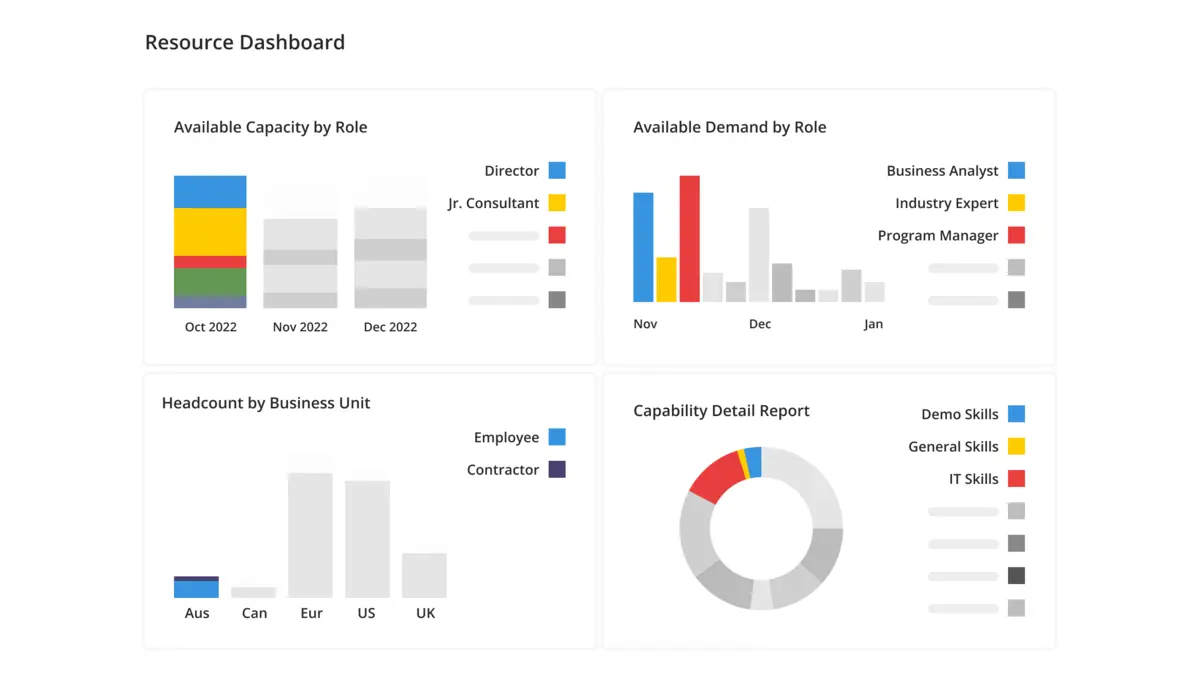
It integrates various project management tools within the software. Moreover, Kantata’s user-friendly interface and powerful features make it an ideal solution for improving productivity and optimizing resource utilization.
Key features:
- Resource planning and allocation: Advanced tools for planning and allocating resources across multiple projects, ensuring optimal utilization.
- Project tracking: Real-time project tracking and monitoring to keep all stakeholders updated on progress and potential issues.
- Collaboration tools: Integrated communication and collaboration features that facilitate seamless teamwork and information sharing.
- Reporting and analytics: Comprehensive reporting and analytics capabilities to provide insights into resource usage, project performance, and more.
- Budget management: Tools for managing project budgets, tracking expenses, and ensuring financial control.
- Time tracking: Efficient time tracking features that help monitor employee work hours and project timelines.
|
Pros |
Cons |
|
|
5. Resource management software Float
Float is a leading resource management software designed to help teams plan, manage, and track their projects and resources effectively. It provides a visual and intuitive interface that makes scheduling easy and transparent.
Ideal for agencies, studios, and firms, Float offers a streamlined solution to ensure optimal resource allocation, timely deadlines, and enhanced team collaboration.
Key features:
- Drag-and-drop scheduling: Easily assign tasks and allocate resources with a simple drag-and-drop interface.
- Real-time updates: Keep everyone on the same page with real-time updates and notifications.
- Capacity management: Monitor team capacity and workload to avoid overbooking and burnout.
- Project forecasting: Plan and forecast project timelines and resource needs accurately.
- Integration capabilities: Seamlessly integrate with popular tools like Slack, Asana, and Trello.
- Time tracking: Track actual time spent on tasks and compare it with estimated time to improve future planning.
|
Pros |
Cons |
|
|
6. Project management software Scoro
Scoro is a comprehensive business management software designed to streamline various aspects of project management, time tracking, billing, and reporting.
It integrates all the tools a business needs into one robust platform, offering a seamless workflow for managing projects, resources, and financials. Scoro is suitable for small to medium-sized businesses looking to enhance their productivity and efficiency.
Key features:
- Project management: From a single interface, manage all project-related activities, including task assignments, deadlines, and progress tracking.
- Resource planning: Optimize resource allocation with real-time updates on availability and workload balancing.
- Time tracking: Track billable and non-billable hours with ease, ensuring accurate invoicing and productivity analysis.
- Financial management: Handle quotes, invoices, and expenses within the platform, integrating financial data with project management.
- Reporting & dashboards: Generate comprehensive reports and visual dashboards to monitor performance and make data-driven decisions.
- CRM integration: Maintain customer relationships with integrated CRM functionalities that manage contacts, communications, and sales pipelines.
|
Pros |
Cons |
|
|
7. Project management software Paymo
Paymo is comprehensive resource management software designed for small—to medium-sized businesses. It offers an all-in-one solution for project management, task management, time tracking, and invoicing.
It provides a user-friendly interface that simplifies complex workflows, ensuring efficient resource allocation and project execution. Paymo is particularly beneficial for teams in creative industries, consulting, and professional services who need to manage multiple projects simultaneously.
Key features:
- Task management: Organize and prioritize tasks with detailed to-do lists, milestones, and dependencies to ensure timely project completion.
- Time tracking: Accurately track time spent on tasks and projects using multiple timers and manual entries, facilitating precise billing and productivity analysis.
- Gantt charts: Visualize project timelines and task dependencies to better plan and adjust schedules as needed.
- Resource scheduling: Allocate resources effectively by managing team availability, workload, and capacity, preventing overbooking and burnout.
- Invoicing: Generate and send professional invoices directly from tracked hours and project data, streamlining the billing process.
- Collaborative features: Enhance team collaboration with real-time comments, file sharing, and project discussions, ensuring everyone stays aligned.
|
Pros |
Cons |
|
|
8. ProjectManager
ProjectManager is a robust resource management software designed to streamline project planning, scheduling, and tracking for businesses of all sizes. This software offers an intuitive interface and a comprehensive suite of tools that cater to the diverse needs of project managers and team members alike.
Its cloud-based platform ensures real-time updates and accessibility from anywhere, making it ideal for managing remote and on-site teams.
Key features:
- Gantt charts: Create and manage detailed project timelines with drag-and-drop Gantt charts.
- Real-time dashboards: Monitor project progress and performance with customizable, real-time dashboards.
- Resource allocation: Efficiently allocate resources and track their usage across multiple projects.
- Task management: Assign, prioritize, and track tasks with to-do lists, kanban boards, and task dependencies.
- Time tracking: Log hours and manage timesheets to ensure accurate time tracking and billing.
- Collaboration tools: Foster team collaboration with integrated chat, file sharing, and document management features.
|
Pros |
Cons |
|
|
9. Resource management software Saviom
Saviom is a comprehensive solution designed to optimize resource utilization and project efficiency. It provides advanced tools for planning, scheduling, and managing resources across multiple projects.
The software is ideal for businesses seeking to improve productivity and achieve better project outcomes through effective resource allocation.
Key features:
- Advanced resource scheduling: Offers detailed resource scheduling capabilities, allowing managers to allocate resources efficiently based on availability, skills, and project requirements.
- Real-time resource tracking: Provides real-time tracking of resource utilization, ensuring that project managers can make informed decisions and adjust allocations as needed.
- Resource forecasting: Includes powerful forecasting tools to predict future resource needs and avoid potential bottlenecks or underutilization.
- Project portfolio management: Enables comprehensive management of multiple projects, providing insights into resource distribution and project timelines.
- Skill and capacity management: Helps track the skills and capacity of resources, ensuring that the right people are assigned to the right tasks.
- Customizable dashboards and reports: This service offers customizable dashboards and reporting tools to provide clear visibility into resource usage and project progress.
|
Pros |
Cons |
|
|
10. Management software Runn
Runn is a dynamic resource management software designed to help businesses efficiently plan, track, and manage their resources.
It provides a clear visual interface for scheduling and forecasting, making it easy to allocate resources to projects and monitor their utilization in real time. Runn is suitable for organizations of all sizes, aiming to improve productivity and optimize resource usage.
Key features:
- Resource scheduling: Visual timeline for easy resource allocation and management.
- Capacity planning: Forecast resource availability and project demand to avoid overbooking.
- Time tracking: Track actual hours worked versus planned hours for accurate reporting.
- Project financials: Monitor project budgets, costs, and profitability in real time.
- Reporting & analytics: Generate detailed reports on resource utilization, project performance, and financials.
- Integrations: Seamless integration with popular tools like Jira, Harvest, and Slack.
|
Pros |
Cons |
|
|
11. Human resource management software PeopleHum
PeopleHum is comprehensive resource management software designed to streamline workforce planning, optimize resource allocation, and enhance overall productivity. It is suitable for businesses of all sizes aiming to improve their resource management processes.
This software integrates seamlessly with various HR functions, ensuring efficient management of human resources from recruitment to retirement.
Key features:
- Resource allocation: Efficiently assign tasks and projects to the right team members based on their skills and availability.
- Performance analytics: Track and analyze employee performance with detailed reports and insights.
- Workforce planning: Forecast staffing needs and manage workforce planning to ensure optimal resource utilization.
- Collaboration tools: Facilitate team collaboration with integrated communication and project management tools.
- Talent management: Manage the entire talent lifecycle, including recruitment, onboarding, training, and development.
- Time tracking: Monitor employee work hours and project time with accurate time tracking features.
|
Pros |
Cons |
|
|
12. Sprout Solutions
Sprout Solutions offers comprehensive resource management software designed to streamline businesses’ HR and payroll processes. This cloud-based platform integrates various HR functions, providing tools for employee management, attendance tracking, payroll automation, and compliance.
This resource management software is tailored to meet the needs of businesses in the Philippines, ensuring compliance with local labor laws and regulations.
Key features:
- Employee management: Centralized database for managing employee records, performance reviews, and onboarding processes.
- Attendance tracking: Automated time and attendance monitoring with biometric integration and mobile check-ins.
- Payroll automation: Streamlined payroll processing with automated calculations for taxes, deductions, and compliance.
- Leave management: Efficient leave request and approval system with real-time tracking of leave balances.
- Compliance management: Ensures adherence to Philippine labor laws and regulations, including automated government reporting.
- Employee self-service: Employee portal for accessing payslips, applying for leave, and updating personal information.
|
Pros |
Cons |
|
|
13. Management software GreatDayHR
GreatDayHR is a comprehensive human resource management software designed to streamline HR processes and enhance employee engagement.
It offers a range of features, from attendance tracking and payroll management to performance appraisals and employee self-service portals. GreatDayHR aims to simplify HR operations and foster a more productive and efficient work environment.
Key features:
- Attendance tracking: Real-time attendance monitoring with geolocation and facial recognition capabilities.
- Payroll management: Automated payroll processing with tax calculations and compliance with local regulations.
- Employee self-service: Allows employees to manage their own profiles, leave requests, and access payslips.
- Performance appraisals: Comprehensive tools for conducting performance reviews and setting employee goals.
- Leave management: Streamlined leave application and approval process with customizable leave policies.
- Document management: Secure storage and easy access to important HR documents and employee records.
|
Pros |
Cons |
|
|
14. Human resource management software Finn
Finn is versatile resource management software designed to optimize resource allocation and utilization within organizations. With its intuitive interface and powerful analytics, Finn enables businesses to streamline their resource planning.
It caters to diverse industries, including IT, marketing, and construction, making it an ideal solution for teams looking to enhance their operational efficiency.
Key features:
- Real-time resource tracking: Monitor resource availability and utilization in real time to ensure optimal allocation.
- Advanced scheduling: Create and manage detailed schedules for projects, tasks, and resources to meet deadlines effectively.
- Capacity planning: Analyze resource capacity and demand to balance workloads and prevent over or underutilization.
- Reporting and analytics: Generate comprehensive reports and gain insights into resource performance, utilization, and project progress.
- Integration capabilities: Seamlessly integrate with popular project management and collaboration tools to enhance workflow efficiency.
- Customizable dashboards: Personalize dashboards to display critical metrics and information relevant to specific roles and projects.
|
Pros |
Cons |
|
|
15. Human resource management software miHCM
miHCM is comprehensive resource management software designed to streamline HR processes and improve workforce efficiency.
It offers a suite of tools to manage employee information, track performance, and automate administrative tasks, making it ideal for organizations looking to enhance their HR capabilities.
Key features:
- Employee information management: Centralized database for all employee records, ensuring easy access and management.
- Performance tracking: Tools to monitor and evaluate employee performance with customizable KPIs.
- Leave management: Automated leave request and approval process, integrated with attendance tracking.
- Payroll processing: Accurate and efficient payroll management, including tax calculations and compliance.
- Recruitment automation: End-to-end recruitment process automation, from job postings to onboarding.
- Analytics and reporting: Advanced analytics and reporting capabilities to gain insights into workforce trends and performance.
|
Pros |
Cons |
|
|
16. Management software Deel
Deel is a comprehensive resource management software designed to simplify the complexities of hiring, managing, and paying a global workforce.
It enables businesses to streamline their operations by offering solutions for compliance, payroll, and contract management, ensuring adherence to local regulations. Deel is particularly valuable for companies looking to scale their international teams efficiently and securely.
Key features:
- Global payroll: Seamlessly manage payroll for employees and contractors in over 150 countries, with built-in compliance.
- Contractor management: Easily create, send, and manage contracts for international contractors with localized templates.
- Compliance automation: Automated compliance with local laws and regulations, reducing the risk of legal issues.
- Employee benefits: Offer a variety of benefits packages tailored to each country, enhancing employee satisfaction and retention.
- Onboarding: Simplified onboarding process for new hires, including document verification and e-signature capabilities.
- Tax management: Integrated tax management tools to handle diverse tax requirements globally.
|
Pros |
Cons |
|
|
How to Choose The Right Resource Management Software for Your Business
Choosing the right resource management software for your business in the Philippines can be challenging, but it’s important to find one that fits your needs. Here are some tips to help you make the right choice.
First, consider your business size and needs. Small businesses might need basic features like employee scheduling and task management, while larger companies might require advanced tools like payroll and compliance management.
Second, look for software that is easy to use. Your team should be able to learn it quickly without a steep learning curve. A user-friendly interface will save you time and reduce frustration.
Third, ensure the software offers good customer support. It’s important to have access to help when you need it, especially if you encounter issues.
Fourth, check if the software complies with local regulations in the Philippines. This includes payroll laws, tax regulations, and labor standards.
Fifth, consider integration capabilities. The software should integrate well with other tools you use, such as accounting software or communication platforms.
Finally, consider the cost. Compare prices and features to ensure you get the best value for your money. Look for flexible pricing plans that fit your budget.
By following these tips, you can find the right resource management software to help your business thrive in the Philippines.
Conclusion
Resource management software is essential for optimizing your business operations and ensuring efficient use of resources. With many options available, choosing the right software can be challenging.
Our list of top resource management software in the Philippines provides you with the best choices tailored to your business needs. Among these, HashMicro’s resource management software stands out for its comprehensive features, user-friendly interface, and customizable options.
To see how HashMicro can benefit your business, access their free demo today and explore the features without any commitment. This hands-on experience will help you make an informed decision and understand why HashMicro is a top choice for businesses in the Philippines.
Don’t miss this opportunity to enhance your resource management and take your business to the next level. What are you waiting for? Access the free demo now!
FAQ Resource Management Software
-
How can resource management software integrate with existing systems?
Resource management software, particularly sophisticated solutions like those offered by HashMicro, typically includes integration capabilities with existing ERP systems. This integration facilitates seamless data exchange between systems, ensuring that resource allocation and project management data are consistent across all platforms.
-
What are common issues faced when implementing resource management software?
Common challenges include difficulties in real-time data synchronization, managing complex user interfaces, and integrating the software with other business systems. To address these issues, choosing software like HashMicro’s, which emphasizes user-friendly interfaces and robust integration capabilities, can be beneficial.
-
What types of training and support are available for resource management software in the Philippines?
Providers typically offer comprehensive training programs and customer support to ensure effective implementation and usage of their software. HashMicro, for example, provides detailed user guides, online training sessions, and customer support to assist businesses in maximizing the benefits of their resource management software.
-
Can resource management software support remote teams?
Yes, modern resource management software supports remote teams by providing tools that allow for virtual collaboration, resource allocation, and project monitoring across different locations. Systems that offer cloud-based solutions and mobile access, such as those developed by HashMicro, are particularly effective for managing dispersed teams.
-
Can resource management software support remote teams?
Yes, modern resource management software supports remote teams by providing tools that allow for virtual collaboration, resource allocation, and project monitoring across different locations. Systems that offer cloud-based solutions and mobile access, such as those developed by HashMicro, are particularly effective for managing dispersed teams.
-
How does resource management software handle data security and privacy?
Resource management software ensures data security and privacy through encryption, secure data storage, and compliance with international data protection regulations. Providers like HashMicro prioritize these aspects, offering secure cloud-based platforms that protect sensitive business and resource management data.
-
What is the best tool for resource management?
HashMicro’s Resource Management System is one of the best tools for efficient resource management. It offers features like automated scheduling, real-time tracking, and comprehensive reporting, helping businesses optimize resource allocation and improve overall productivity.










